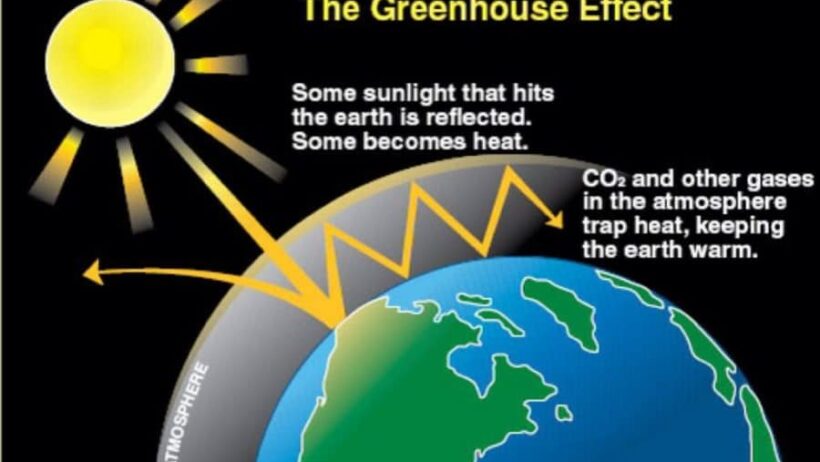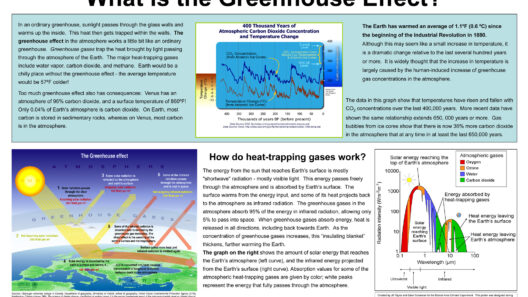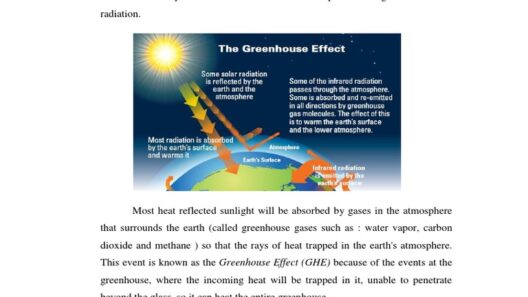The Greenhouse Effect: Understanding Its Mechanism and Significance
The greenhouse effect is a natural phenomenon crucial for sustaining life on Earth. It refers to the process through which certain gases in the atmosphere trap heat. The Earth receives energy from the sun in the form of sunlight. While some of this energy is reflected back into space, a significant portion penetrates the atmosphere and warms the planet. The greenhouse gases then trap this heat, preventing it from escaping into space and thereby maintaining a temperature conducive to life. However, an increase in these gases exacerbates climate change and poses significant environmental challenges.
At its core, the greenhouse effect is governed by a delicate interplay of solar radiation, atmospheric composition, and surface temperature. Understanding this phenomenon is imperative as we navigate the complexities of climate science and environmental stewardship.
What Are Greenhouse Gases and Their Sources?
Greenhouse gases (GHGs) are diverse and include carbon dioxide (CO2), methane (CH4), nitrous oxide (N2O), and fluorinated gases. Each of these gases has a unique source and varying levels of potency regarding their ability to trap heat.
Carbon dioxide is the most prevalent GHG, primarily emitted through the combustion of fossil fuels for energy. Transportation, industrial processes, and deforestation are substantial contributors to CO2 emissions, highlighting the need for sustainable energy solutions.
Methane, a gas with over 25 times the heat-trapping capability of CO2 over a 100-year period, arises from several sources. Agricultural practices, particularly enteric fermentation in livestock, and the decay of organic waste in landfills contribute significantly to methane emissions. Accidental releases during natural gas extraction and transportation also exacerbate this issue.
Nitrous oxide emissions primarily stem from agricultural activities, particularly the use of synthetic fertilizers. The improper application of these fertilizers increases N2O levels in the atmosphere, contributing to ozone depletion alongside its global warming potential.
Fluorinated gases, though present in smaller quantities, can be thousands of times more effective in trapping heat than CO2. These gases are primarily synthetic and are used in industrial applications, refrigerants, and aerosol propellants. Reducing their emissions is a focus area in climate agreements due to their damaging environmental effects.
The Complex Relationship Between Greenhouse Gases and Climate
The interplay between greenhouse gases and climate is intricate. The constant emission of GHGs results in an enhanced greenhouse effect. This enhanced effect leads to global warming, where an average rise in the Earth’s temperature disrupts weather patterns, elevates sea levels, and increases the frequency and severity of extreme weather events.
Science indicates that human activities have increased atmospheric CO2 concentrations from about 280 parts per million (ppm) before the Industrial Revolution to over 400 ppm today. This astronomical surge underscores the urgent need for effective climate action.
The ramifications of accelerated warming extend beyond mere temperature increases. It influences everything from biodiversity to human health, and food security to water availability. For instance, higher temperatures lead to the melting of glaciers, resulting in rising sea levels that threaten coastal communities. Disturbances in weather patterns can lead to prolonged droughts in some regions while causing floods in others, resulting in significant economic losses.
Mitigating Climate Change: Solutions and Alternatives
Addressing the adverse effects of the greenhouse effect necessitates a multifaceted approach. It begins with reducing GHG emissions through various strategies.
Transitioning to renewable energy sources such as solar, wind, and hydroelectric power is pivotal. These resources emit negligible greenhouse gases compared to traditional fossil fuels. By shifting toward cleaner energy, we can significantly reduce dependency on carbon-intensive sources and foster a sustainable energy landscape.
Enhancing energy efficiency in residential, commercial, and industrial sectors is another crucial strategy. Simple measures such as increasing energy efficiency in buildings, improving transportation technologies, and promoting energy conservation can lead to substantial emission reductions. Governments and corporations alike are beginning to implement energy-efficient practices, recognizing the dual benefits of cost savings and environmental protection.
Furthermore, reforestation and afforestation initiatives play an essential role in sequestering CO2 from the atmosphere. Forests serve as carbon sinks, absorbing significant amounts of carbon and contributing to biodiversity conservation. Protecting existing forests from deforestation should be a conservation priority.
Lastly, raising awareness about the implications of the greenhouse effect is vital. Education empowers individuals and communities to make informed decisions regarding their carbon footprints. Promoting sustainable agricultural practices, encouraging climate-friendly diets, and advocating for reduced energy consumption can collectively foster a culture of environmental responsibility.
Concluding Thoughts on the Greenhouse Effect
The greenhouse effect is an intricate yet essential process for life on Earth. However, the anthropogenic escalation of greenhouse gases jeopardizes this balance. Understanding the mechanics behind this phenomenon armors us with the knowledge necessary to initiate meaningful change. Exploring innovative solutions, involving community participation, and committing to robust environmental policies are paramount in our fight against climate change.
As stewards of the planet, it’s incumbent upon us to solidify the health of our environment for future generations. By addressing the sources of greenhouse gas emissions and their impact on our climate, we can steer society toward a more sustainable, resilient, and harmonious way of living.








